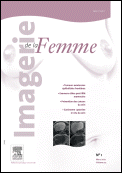
Imagerie de la Femme
Scope & Guideline
Elevating Women’s Health: Insights and Innovations
Introduction
Aims and Scopes
- Breast Imaging and Diagnosis:
A core focus of the journal is on breast imaging techniques, including mammography, MRI, and ultrasound, aimed at improving diagnostic accuracy and treatment planning for breast cancer and other breast-related conditions. - Endometriosis Imaging:
The journal extensively covers imaging techniques for diagnosing and managing endometriosis, reflecting its importance in women's health and the need for accurate imaging to guide treatment. - Interventional Radiology:
There is a significant emphasis on interventional procedures related to breast imaging, showcasing innovative techniques for biopsy and treatment, thus bridging the gap between imaging and therapeutic interventions. - Multidisciplinary Approaches:
The journal promotes a multidisciplinary perspective, integrating radiology, surgery, and oncology to optimize patient management and outcomes, particularly in complex cases. - Emerging Imaging Technologies:
The introduction and evaluation of new imaging technologies, such as contrast-enhanced digital mammography and PET-MRI, highlight the journal's commitment to staying at the forefront of imaging advancements.
Trending and Emerging
- Contrast-Enhanced Imaging Techniques:
There is a growing trend towards the exploration of contrast-enhanced imaging techniques, particularly in breast imaging, which are seen as essential for improving diagnostic accuracy and treatment outcomes. - Artificial Intelligence in Imaging:
The integration of artificial intelligence in imaging practices is gaining attention, as the journal begins to explore its implications for screening and diagnosis, signaling a shift towards technological innovations. - Interdisciplinary Collaboration:
The importance of collaboration between radiologists, oncologists, and surgeons is increasingly featured, highlighting a trend towards comprehensive patient care and the optimization of treatment strategies. - Focus on Patient-Centric Care:
Emerging themes reflect a heightened focus on patient experiences and outcomes, particularly in communication and the psychological aspects of dealing with cancer diagnoses. - Novel Biomarkers and Molecular Subtypes in Breast Cancer:
The exploration of molecular subtypes and biomarkers in breast cancer is becoming more prevalent, indicating a trend towards personalized medicine in imaging and treatment approaches.
Declining or Waning
- Traditional Imaging Techniques:
There is a noticeable reduction in the publication of studies focused solely on traditional imaging techniques, as newer modalities like contrast-enhanced mammography gain traction. - General Gynecological Imaging:
While gynecological imaging remains relevant, there seems to be a waning interest in broad topics not specifically tied to breast imaging or endometriosis, indicating a more focused direction in recent publications. - Case Reports of Rare Conditions:
The frequency of case reports detailing rare conditions has diminished, possibly as the journal shifts towards more common and clinically relevant topics that can impact broader patient populations.
Similar Journals
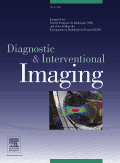
Diagnostic and Interventional Imaging
Driving Innovation in Imaging Techniques and PracticesDiagnostic and Interventional Imaging, published by Elsevier Masson, stands as a prominent journal in the fields of Radiology, Nuclear Medicine, and Imaging. With a significant impact factor and a reputation for high-quality research, this journal is dedicated to advancing the understanding and application of diagnostic and interventional imaging techniques. It has achieved an impressive Q1 ranking across multiple categories including Medicine (miscellaneous) and Radiological and Ultrasound Technology, demonstrating its esteemed position within the academic community. The journal features cutting-edge studies and reviews, reflecting the latest innovations and practices from 2012 to 2024. Researchers, healthcare professionals, and students alike can look forward to accessing valuable insights that drive forward the discipline and improve patient outcomes, as evidenced by its robust Scopus rankings placing it among the top journals in its domain.

Hong Kong Journal of Radiology
Pioneering Research for a Healthier TomorrowHong Kong Journal of Radiology, an esteemed publication of the Hong Kong Academy of Medicine Press, serves as a vital platform for disseminating innovative research in the field of radiology, nuclear medicine, and imaging. Established in 2011 and operating under an Open Access model since 2018, this journal not only promotes the sharing of knowledge but also enhances global accessibility to cutting-edge studies. With its ISSN 2223-6619 and E-ISSN 2307-4620, the journal strives to engage a diverse audience ranging from experienced professionals to aspiring scholars in the medical imaging domain. Despite its current ranking in the Q4 quartile of the Scopus category for radiology, the journal is committed to improving its standing by featuring high-quality research that addresses pressing issues in the field. The journal's convergence from 2011 to 2024 reflects its ongoing dedication to fostering academic excellence and encouraging collaborative discourse among researchers and practitioners globally. Located in Hong Kong, the journal plays a significant role in shaping the future of radiology education and practice in China and beyond.

Current Breast Cancer Reports
Connecting Science and Solutions for Breast Cancer.Current Breast Cancer Reports is a vital academic journal published by Springer that focuses on the latest research and advancements in the field of breast cancer. With its ISSN 1943-4588 and E-ISSN 1943-4596, this journal serves as an essential resource for oncologists, researchers, and healthcare professionals dedicated to improving diagnosis and treatment strategies for breast cancer. Spanning from 2009 to 2024, it provides a platform for high-quality, peer-reviewed articles that encompass a range of topics, including molecular biology, clinical trials, and innovative therapeutic approaches. Although it is currently classified in the Q3 category in Oncology and is positioned in the 29th percentile, the journal remains committed to elevating its academic impact and contributing meaningfully to the ongoing fight against breast cancer. As it seeks to disseminate critical findings and foster collaboration within the scientific community, Current Breast Cancer Reports is poised to be an indispensable tool for anyone keen on advancing the field.

European Journal of Radiology Open
Unlocking Insights in Radiology for AllThe European Journal of Radiology Open, published by Elsevier, has established itself as a pivotal platform for disseminating high-quality research in the field of radiology, nuclear medicine, and imaging since its inception in 2014. This open access journal, holding a commendable Q2 ranking in the esteemed 2023 Scopus categorization, seeks to foster a collaborative environment where researchers, professionals, and students can share innovative findings and advancements. Operating under the E-ISSN 2352-0477, this journal contributes to the broader scientific discourse with a commitment to accessibility and transparency, ensuring that cutting-edge research is available to a global audience. The journal's dual focus on rigorous peer review and rapid publication processes underscores its importance within the academic community, aiming to empower professionals with the latest insights in the dynamic landscape of medical imaging.

Japanese Journal of Radiology
Connecting Researchers and Practitioners in RadiologyThe Japanese Journal of Radiology, published by SPRINGER, serves as a premier platform for disseminating cutting-edge research and clinical advancements in the fields of radiology, nuclear medicine, and imaging. With an ISSN of 1867-1071 and E-ISSN 1867-108X, this journal has established itself as a vital resource for practitioners, researchers, and students alike. Renowned for its high-quality peer-reviewed articles, it currently enjoys a respectable impact factor within the Q2 category of Scopus rankings, placing it in the 69th percentile among 333 journals in its field. The journal has seen consistent convergence of research from 2009 to 2024, further underscoring its commitment to advancing the understanding of radiological practices. Importantly, the journal offers Open Access options to facilitate widespread dissemination of knowledge, ensuring that vital research reaches its audience without barriers. Addressed in Japan, the Japanese Journal of Radiology plays a critical role in enhancing the global discourse on medical imaging, making it an essential resource for anyone engaged in this dynamic field.

EUROPEAN JOURNAL OF RADIOLOGY
Transforming Patient Care Through Radiological ResearchThe European Journal of Radiology, published by Elsevier Ireland Ltd, is a premier peer-reviewed journal in the fields of radiology, nuclear medicine, and imaging. Established in 1981, it has carved a significant niche within the academic community, showcasing innovative research that enhances medical imaging practices and improves patient care. With an impressive ranking in the Q1 category for both Medicine (miscellaneous) and Radiology, Nuclear Medicine, and Imaging in 2023, the journal is recognized globally for its commitment to advancing scientific knowledge and improving imaging methodologies. The journal's Scopus ranking of #60/333, placing it in the 82nd percentile, underlines its reputation for high-quality research and scholarly contributions. While traditionally a subscription-based journal, it continually evolves to meet the demands of the academic landscape, aiming to bridge the gap between research and clinical practice. Researchers, healthcare professionals, and students alike can benefit from exploring its extensive archives and current publications, which are curated to foster education and innovation in the medical imaging domain.
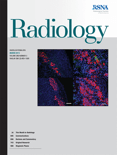
RADIOLOGY
Fostering knowledge for the next generation of radiologists.RADIOLOGY, published by the Radiological Society of North America (RSNA), stands as a premier journal in the fields of radiology, nuclear medicine, and imaging. Established in 1945, this esteemed journal has consistently provided groundbreaking research and insights, helping to shape advancements in diagnostic imaging and therapeutic interventions. With a commendable Q1 ranking in its category and a remarkable 99th percentile ranking in Scopus, RADIOLOGY continues to be a pivotal resource for clinicians, researchers, and students alike. Although not an Open Access journal, it offers a wealth of high-quality peer-reviewed articles that contribute significantly to the ongoing discourse in the medical community. With a strong focus on innovative techniques and the integration of new technologies, RADIOLOGY remains essential for professionals aiming to stay at the forefront of medical imaging practices.
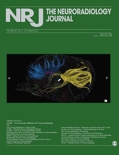
Neuroradiology Journal
Driving excellence in neuroradiological research and practice.Neuroradiology Journal is a prominent publication in the fields of medicine, neurology, and radiology, published by SAGE PUBLICATIONS INC. Located in Italy, this journal has been a key resource since its inception in 2006 and continues to showcase vital research up to 2024. With an ISSN of 1971-4009 and an E-ISSN of 2385-1996, it provides an open platform for groundbreaking studies, effectively bridging clinical practices and advancements in imaging techniques. Holding a respectable position in Q3 of the 2023 category rankings for medicine, neurology, and radiology, the journal caters to a diverse audience of researchers, professionals, and students, driving innovations in neuroradiology and influencing best practices worldwide. Although not an open-access journal, it remains accessible through various subscription options, ensuring that significant findings are distributed widely within the medical community. Stay informed on the latest research and trends that continue to shape the landscape of neuroradiological science through Neuroradiology Journal.
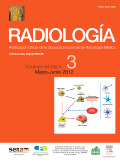
RADIOLOGIA
Transforming patient care through pioneering imaging techniques.RADIOLOGIA is a distinguished journal in the field of Radiology, Nuclear Medicine, and Imaging, published by Elsevier España. With a rich history since its inception in 1961, this journal serves as a vital resource for professionals, researchers, and students interested in the latest developments and innovations in radiological practices. Although it is currently categorized in the Q3 quartile, its contributions continue to shape and advance clinical practices and research in radiology. RADIOLOGIA provides a platform for scholarly articles, reviews, and case studies that underpin the complexities of imaging techniques and nuclear medicine, while also addressing emerging trends and technologies. The journal is indexed with the ISSN 0033-8338 and E-ISSN 1578-178X, reflecting its accessibility to a global audience dedicated to enhancing patient care through advanced imaging methodologies. Readers can find the journal published in Spain and benefit from its commitment to disseminating pertinent research across diverse aspects of radiology.

SA Journal of Radiology
Unlocking Insights: Your Gateway to Radiology ExcellenceThe SA Journal of Radiology is a prominent open-access journal published by AOSIS, dedicated to advancing knowledge in the fields of Radiology and Ultrasound Technology. Established in 2004, this South African journal provides a platform for researchers, professionals, and students to disseminate valuable findings and share innovative practices in medical imaging. With an ISSN of 1027-202X and an E-ISSN of 2078-6778, the journal has become an important resource for those involved in radiological sciences, despite currently holding a Q4 ranking in both Radiological and Ultrasound Technology and Radiology, Nuclear Medicine and Imaging categories. Covering a converged time span from 2014 to 2024, the journal aims to promote scholarly communication and enhance the accessibility of research, positioning itself as a key player in the global radiological community. In a landscape where open access is increasingly critical, the SA Journal of Radiology is committed to fostering research collaboration and facilitating the exchange of ideas among clinicians and academics alike.